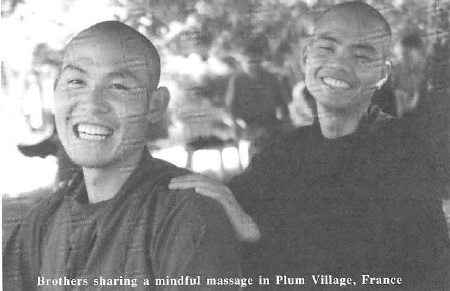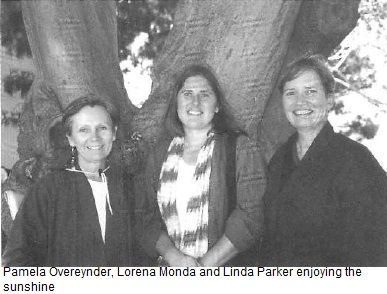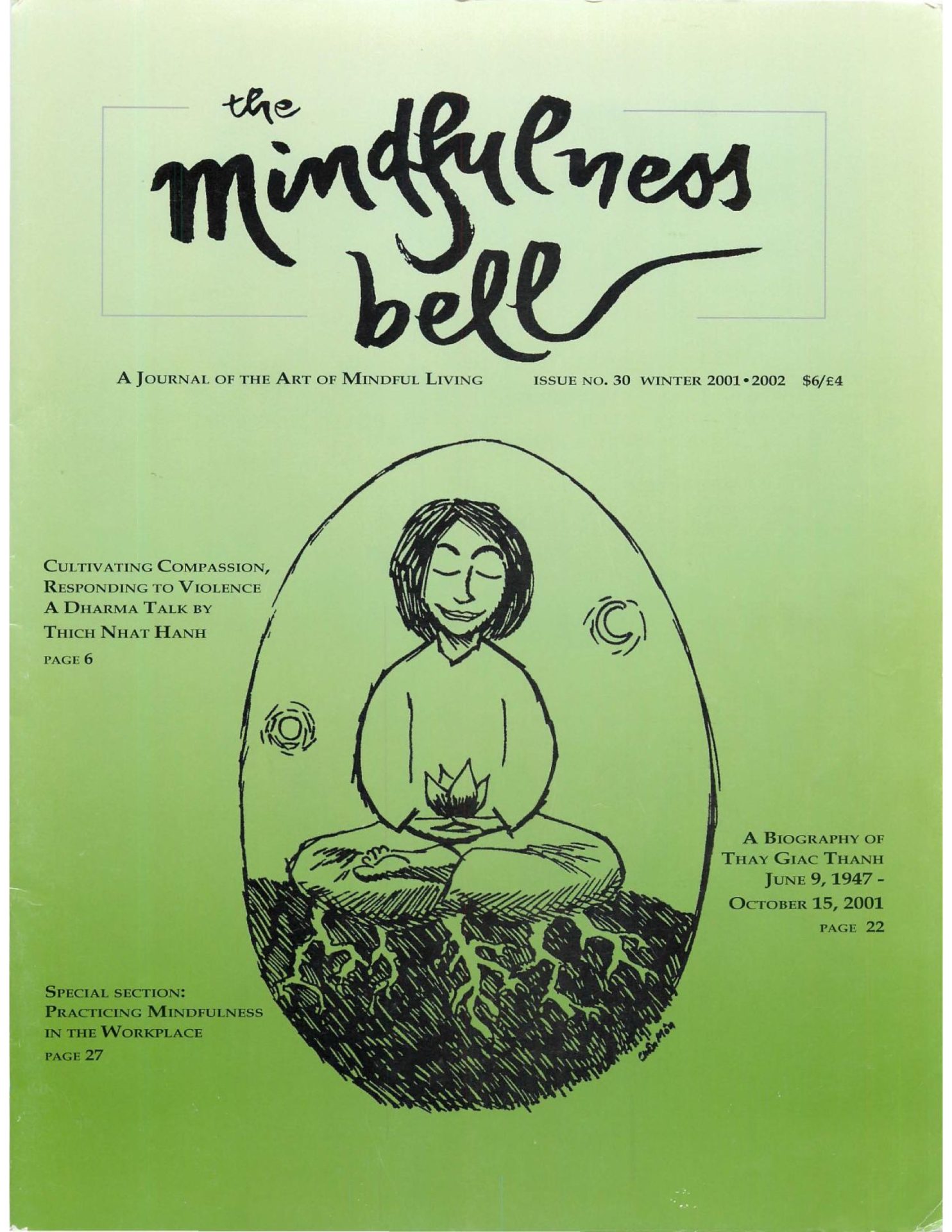A Massage Therapist Practices the First Establishment of Mindfulness
By Pamela Overeynder
I have been a massage therapist for many years. I have practiced mindfulness for many years yet somehow it took a long time for me to realize that these are not two separate practices. In the past I did massage very unmindfully. I would mentally drift, led along by endless thoughts or I would go into a vague trancelike state.
A Massage Therapist Practices the First Establishment of Mindfulness
By Pamela Overeynder
I have been a massage therapist for many years. I have practiced mindfulness for many years yet somehow it took a long time for me to realize that these are not two separate practices. In the past I did massage very unmindfully. I would mentally drift, led along by endless thoughts or I would go into a vague trancelike state. I was in a passive state and not practicing at all, even though I thought I was at peace. Sometimes I worked very hard to remove adhesions and pain in my client as though it were my responsibility single-handedly to fix the person. After such sessions my body was tired and tense. I often had the feeling I had given away my energy. One day I had the insight again that living in the present moment means breathing with awareness in every activity. It means being with things just as they are without trying to change or fix them but allowing the energy of awareness to be the transforming force.
Slowly I have begun to transform my own practice of massage by observing and working with the first of the Four Establishments of Mindfulness, awareness of the body in the body. I began to notice how often I hold my breath while I work, how often my tummy is contracted and tense, how often I allow my mind to roam away from the body. I saw how much unnecessary force I used to "help" my client. I could see that working unmindfully caused my own body to suffer. I wasn't treating my body with compassion. Lack of awareness of my body, lack of kindness for my body was affecting my health and the quality of the massage I offered. These realizations (still unfolding) naturally led to the desire to share elements of the practice with my clients.

Early on in my massage practice I recognized that in those rare moments when I am completely present and aware of my body and breath, my clients benefit in some intangible as well as tangible ways. For a long time I avoided unnecessary talk while giving massage. I wanted to offer silence. One of the fruits of my own work with the First Establishment of Mindfulness is a willingness to share the practice of awareness of the breath and body as a kind of guided meditation. I don't use Buddhist language. I simply tell the client that I will guide him into a deeper state of relaxation using our collaborative awareness. This practice has been received enthusiastically by almost everyone, and the visible result is a much deeper relaxation and joyful smiles of appreciation at the end of the massage.
I am aware that when someone comes to me for massage, the pain and tension in the body are externalized manifestations of internal states. We live in difficult times. Stress is widespread and has devastating effects on the body. As a massage therapist I see the effects of stress on the physical body and, of course, I have the experience of my own body. Very few of us know how to adapt to challenging external conditions without producing unhealthy stress.
Many people share their emotional suffering with me—i.e., "I just left my husband, our baby is sick, I lost my job, my work is so stressful." My job is to listen deeply without judgment or solutions, simply reflecting the pain I hear in their voices and feel in their bodies, and to assist them with words and touch in letting go in the way that is most appropriate for them. As Thay says, our job is to listen deeply so that the other person can empty her heart. Sometimes the client doesn't say anything at all but I can see suffering in her face and feel the lack of ease and presence with the body. I know the right medicine is awareness and I try to relax and allow the transformation to occur. Each session begins with gentle contact and silent metta: "May he be safe and well. May he be peaceful. May he be filled with light." Often I continue the metta throughout the massage. Every session is different because every human being is unique. I use my intuition to decide what to say and how to say it. Sometimes I do an extended meditation on the parts of the body, the organs, etc. as we do in the practice of Total Relaxation. Sometimes, I say very little, simply encouraging the person to be aware of her body and breath.
I let the client know I will be following my breath and maintaining awareness of my body even as I am encouraging her to do the same. Together we will enjoy our breath and stay present in order to move towards greater ease, relaxation and transformation of the body's suffering. I use my voice as a soothing tool to help establish basic awareness of the breath and body and to maintain that awareness. Of course, this supports my practice as well.
Often I use gathas. "As you breathe in, know that you are breathing in. As you breathe out, know that you are breathing out." I encourage the client to follow the physical sensations of the breath as it enters and leaves the nostrils. Sometimes I continue with deep, slow, calm, ease, smile, release, present moment, wonderful moment - but very slowly throughout the massage. Sometimes I follow my instinct and simply remind the client to return to awareness of the breath - "Observe your breath rising and falling like waves on the ocean," or "Notice how your body is feeling now. Do you feel tension or holding in any part of your body?" or "Imagine as you breathe in that your whole body is breathing in—breathing through every pore of your skin." Or "Return to the present moment. This is a wonderful moment."
I often invite the person to send his breath to a tight spot and allow the breath to melt the tension. Frequently people acknowledge that they were holding their breath. I remind the person there is nothing for her to do, nothing to fix, nothing to do but relax into the present moment and feel the wonderful joy of simply breathing in and out. Usually, when I call attention to the breath, I can feel the client physically let go of more of the tension. This is palpable and real. In the last few minutes of the massage, I invite the client, whom I now feel bonded to in friendship, to offer gratitude to her body and to offer the medicine of a smile to her body. People often chuckle out loud at the thought of smiling to their body.
Many of us do not fully inhabit our bodies. People often tell me they are not aware that they are holding tension in the body. To be intimate with one's own body is to be aware of tension when it exists, to hold the tension lovingly, to seek its causes, to realize that the conditions for relaxation also exist and the seeds of relaxation can be nourished with our awareness. "Breathing in, I'm aware that my body is tense. Breathing out, I smile to the tension. Breathing in, I realize my shoulders are hugging my ears. Breathing out, I enjoy my out breath." Mindful massage encourages us to come home to the body as it is in the here and now. We befriend the body, befriend the tension and the pain and then, as if by miracle, the tension and pain lessen.
This summer at the Amherst retreat I had a profound experience with the healing power of mindfulness of the body. On the morning of the ordination ceremony for the Fourteen Mindfulness Trainings, I woke up with an upset stomach. Because of my deep desire to be present in support of sisters and brothers receiving the Trainings, I decided to go. As I slowly walked to the meditation hall, I held my upset stomach in my hands and recited the gatha "Calm/Ease" while breathing very consciously. When I arrived my stomach was much calmer and I was able to be fully present for the ceremony. A delicious fruit of the practice often comes when my mindfulness is strong and the client is open enough. In those moments a deep intimacy arises between us. Zen teacher, Issan Dorsey used the phrase "abiding in ultimate closeness." To me ultimate closeness means no self and no other. It means no separation. It means deep intimacy. One of the many benefits of mindful massage is that these apparent physical boundaries melt away and, at least briefly, there is only one body, part of the vast Buddha body. In this state of oneness compassion flows naturally.
At times I don't feel connected to my client. I may not feel at home in my body. I may be too tired or distracted, demanding too much of myself. Her body may feel impenetrable and I realize she may have less awareness of and compassion for her own body. She may treat her body badly with poor diet, alcohol, lack of exercise, etc. When I come back to treating my body with compassion, I have the chance to transmit some of what I feel to her and she will begin to have more awareness and appreciation for herself. I am aware that I'm planting and watering seeds of awareness in my client and myself at the same time. I realize this person is not separate from me, that he is part of my Sangha, that his happiness and well-being is my happiness and well-being.
In the beginning I spoke of the tangible and intangible benefits of mindful massage. The tangible benefits are deeper relaxation with increased physiological benefits, a greater feeling of connectedness between self and other, and more peace and joy. Friendship is a tangible benefit. Even if I never see this person again, we are friends. The first client I shared mindful massage with told me later that it had made her realize how important it is to treat her body with loving-kindness. The intangible benefits are harder to talk about. Sometimes I have the feeling my client has touched her true nature even though she may not have words to describe it. One beautiful young woman left the clinic and came back a few minutes later to deeply thank me and to express that she had not realized how profound massage could be. I believe she touched her true nature. I don't know what the long-term effects of mindful massage are because I work in a spa and don't usually see clients more than once. This may be a disadvantage but it is also how life is. We touch the lives of others. We all plant or water seeds and we may never see the effects. I do know from my own experience that every time the seed of awareness of my body is watered, it grows stronger. Many different people have watered those seeds and I'm grateful to them all.
I began this article a few days after the terrorist attacks in New York and Washington. Today I saw something written in large white letters on the rear windshield of the car in front of me. lt said, "Choose compassion and forgiveness. Reject violence and vengeance." This is how Thay teaches us to respond to violence. As I write these words I see that they apply equally to the physical body. If we offer the physical body compassion and forgiveness, we will have no need for violence and vengeance on the individual or the collective level. As Thay says, "Peace is every step." The First Establishment of Mindfulness supports us in cultivating peaceful steps by teaching us to live with awareness and appreciation of the physical body. I have never felt more committed to helping others make peace with their bodies because I know when we come home to our bodies, replacing judgment with acceptance, violence with compassion, the world will be a safer and more peaceful place.

Pamela Overeynder, True Sun of Understanding, practices with Plum Blossom Sangha of Austin and the Texas Hill Country Chapter of the Buddhist Peace Fellowship.

